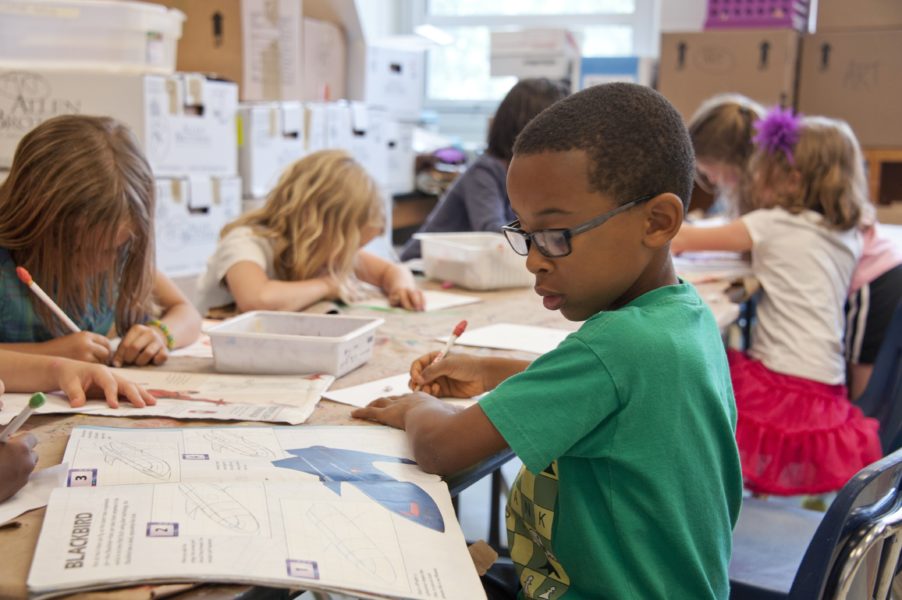
A public health issue
In the last decade, the importance of sleep for children’s emotions, cognition, health and overall development has been recognised. Some even consider it a public health issue. Children are also being exposed to unhealthy and insufficient light throughout the day. Sleep and light are closely interrelated considering that light is the strongest external cue regulating our circadian rhythms.
Increased screen-time, exposure to blue light in the evenings, insufficient time spend outdoors, and poor lighting in schools can lead to various sleep, health and performance problems. Nowadays, schools are installing smart interactive whiteboards. Unfortunately, most often it comes at a cost of turning the lights off in the classroom. But how does sitting in a dim room affect children? Let’s investigate how light interventions can lead to better performance and health outcomes.
Performance in classrooms
A study compared standard lighting and blue-enriched white lighting in classrooms. Children performed better in classrooms with blue-enriched lighting based on the performance on psychological tests. Students showed faster cognitive processing and better concentration. And this is unsurprising considering how short-wavelength light during the first half of the day can improve performance and productivity.
Another study reported that the perception of higher correlated colour temperature (CCT) lighting positively impacts alertness, attitudes, and energy levels in students. The ability to change light levels throughout the day positively impacts student engagement and mood.
Light as a protective measure
The prevalence of myopia or nearsightedness in youth has increased dramatically worldwide, especially in Asian countries. An important line of strategy to combat the rise in myopia is to prevent its onset in childhood. Time outdoors and higher ambient indoor light levels are successful protective measures. Indeed, a study revealed that elevated light levels in schools have a protective effect on myopia.
Healthy indoor lighting, access to natural daylight and intervention programmes to raise awareness on the importance of light in children are necessary. This way, we can tackle sleep problems and circadian misalignment in children. And we can also improve performance and psychological wellbeing in schools.